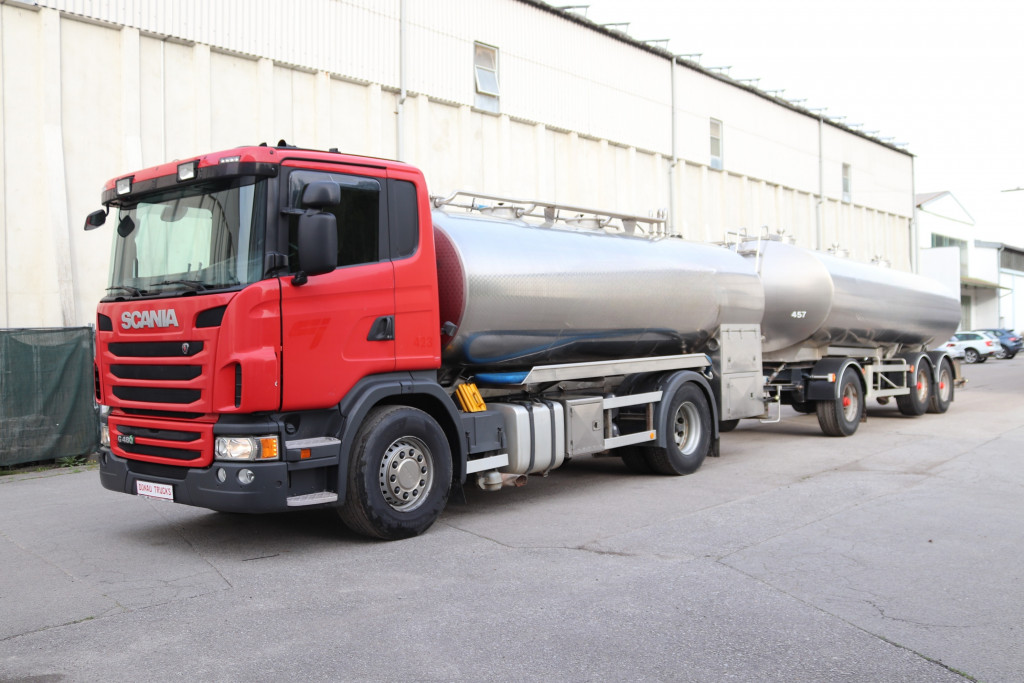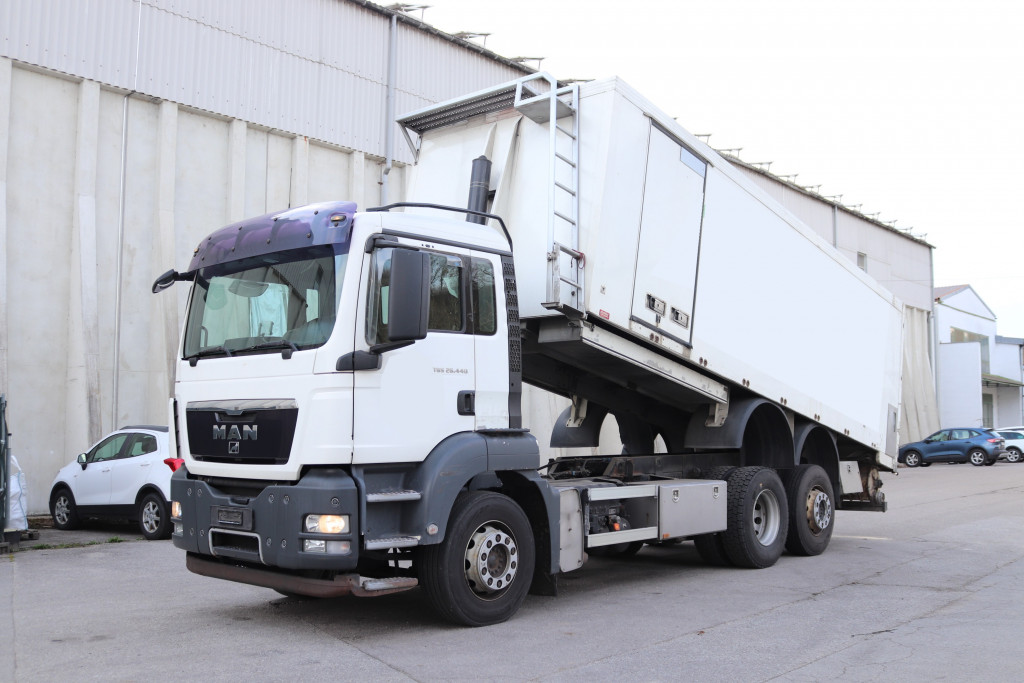AI and The Trucking Industry
20.11.2023
AI is reshaping the trucking industry by optimizing routes, enhancing fuel efficiency, boosting safety measures, and revolutionizing fleet management. We will dive into AI's impact on trucking and discuss its advantages, challenges, and the expansive possibilities on the horizon.
Operational Efficiency with AI
AI-driven route planning algorithms leverage real-time traffic data and weather conditions, analysing historical and current data to pinpoint the most efficient routes. This results in reduced travel time and enhanced fuel efficiency, with systems adapting to dynamic situations by providing real-time updates and alternative routes. The outcome is not only improved efficiency but also heightened customer satisfaction through punctual deliveries.
In the domain of fuel efficiency, AI plays a central role. Advanced algorithms scrutinize load weight, road conditions, and driving behaviour to optimize fuel consumption. Real-time feedback encourages fuel-efficient driving techniques, while predictive analytics identify patterns to minimize fuel waste. The result is a significant reduction in operational costs and environmental impact through the strategic deployment of AI for fuel efficiency.
AI-driven predictive maintenance is transforming fleet management by continuously monitoring critical parameters such as engine performance, tire condition, and fluid levels. Through real-time data analysis and pattern detection, AI algorithms forecast potential maintenance issues, allowing companies to schedule timely maintenance and repairs. This proactive approach minimizes downtime, enhances fleet availability, and extends the lifespan of vehicles, ultimately reducing overall maintenance costs.
Supply Chain and Logistics Reshaped by AI
In the trucking industry, AI technologies are reshaping supply chain and logistics operations. AI-powered systems analyse extensive data related to inventory levels, customer demand, and delivery routes. By optimizing these variables, AI identifies the most efficient routes, reduces empty truck miles, and enhances load consolidation. Additionally, AI-driven demand forecasting and inventory management systems enable companies to optimize stock levels and reduce inventory holding costs. The improved visibility and efficiency in the supply chain empower trucking companies to elevate customer service, cut costs, and maintain a competitive edge in the market.
Safety and Risk Management with AI
Real-time monitoring and early warning systems, powered by AI technologies, play a crucial role in identifying and mitigating potential road risks. These systems continuously monitor driver behaviour, vehicle performance, and environmental conditions, identifying indicators of fatigue, distraction, or erratic driving. Timely early warning alerts are then issued to both the driver and fleet managers, facilitating prompt interventions, and reducing the likelihood of truck driver accidents. This proactive approach to safety not only addresses potential risks but also encourages safe driving practices.
In the trucking industry, AI-powered driver assistance features further enhance safety. These features encompass collision avoidance systems, adaptive cruise control, and lane departure warnings. Utilizing sensors and AI algorithms, these systems identify potential hazards, issue alerts, and, in some cases, take corrective actions. For instance, collision avoidance systems can autonomously apply brakes in emergency situations, minimizing the risk of rear-end collisions. Adaptive cruise control adjusts the vehicle's speed to maintain a safe distance from other vehicles, while lane departure warnings notify drivers of unintentional lane drifts. Overall, these driver assistance features contribute significantly to safety by helping drivers avoid potential accidents.
AI-enabled video analytics systems analyse footage from cameras installed in trucks to identify risky driving behaviours such as tailgating, aggressive manoeuvres, or distracted driving. By detecting these behaviours, AI algorithms offer valuable insights for driver training and behaviour modification. Moreover, these systems assist in accident investigations by providing accurate data and visual evidence. The use of AI-enabled video analytics contributes to accident prevention by recognizing high-risk behaviours, promoting safe driving practices, and enhancing overall road safety.
Enhanced Driver Experience
Intelligent driver assistants play a crucial role in enhancing driver performance and safety by providing real-time feedback, guidance, and support on the road. These AI-enabled assistants, encompassing collision avoidance systems and adaptive cruise control, improve situational awareness and aid in critical driving decisions. Given the substantial risks posed by fatigue and distractions for truck drivers, AI-based monitoring systems employ facial recognition and eye tracking technologies to detect signs of fatigue or distraction in real time. Through issuing timely alerts, these systems remind drivers to take breaks or refocus, preventing accidents attributable to driver fatigue or distractions.
AI-driven training and skill development programs are empowering truck drivers to elevate their capabilities and stay abreast of industry trends. Utilizing virtual reality (VR) simulations, online training modules, and personalized learning platforms equipped with AI algorithms, drivers can undergo targeted training, practice challenging scenarios, and enhance their skills. These programs contribute not only to professional growth but also to job satisfaction and increased confidence among truck drivers.
Ethical Considerations and Challenges
While AI offers numerous advantages, its implementation in the trucking industry presents challenges and ethical considerations that demand attention for responsible and safe use. The extensive use of AI involves collecting and analysing vast amounts of data, emphasizing the importance of ensuring data privacy and security. Robust cybersecurity measures, data encryption, and stringent data governance policies are essential to safeguard sensitive information, preventing unauthorized access or misuse. As AI assumes more responsibilities in autonomous trucking, addressing issues of liability and legal implications becomes paramount. Determining accountability in accidents involving autonomous trucks, establishing regulations, and defining a legal framework are complex matters requiring resolution for a seamless transition to a future with AI-powered trucks. The integration of AI and autonomous trucks also raises concerns about their impact on the human workforce. With increasing automation, there is a need to manage the transition for truck drivers, whose roles may evolve or be replaced. Supporting retraining programs, facilitating job transitions, and addressing potential socio-economic impacts become crucial for ensuring a smooth transition for the human workforce.
The Future Landscape of AI in Trucking
The future prospects for AI in the trucking industry are expansive and promising. Ranging from fully autonomous trucks to AI-driven predictive maintenance and sophisticated logistics optimization, the capacity for AI to transform the industry is substantial. Nevertheless, a thoughtful examination of implications, including job displacement, regulatory frameworks, and ethical guidelines, will be essential to fully realizing the potential of AI in a responsible and sustainable manner.



